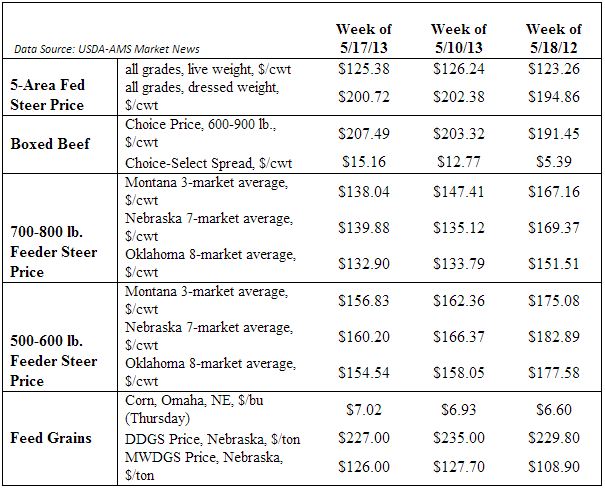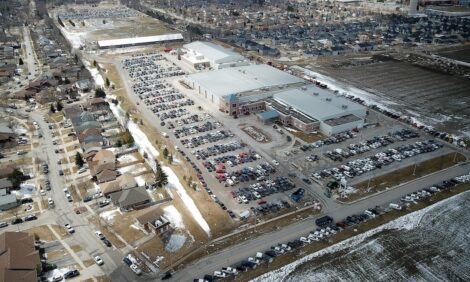



In The Cattle Markets: Cattle on Feed Numbers Remain Lower
US - Figures for cattle on feed are accurately predicted by analysts, this month's report was 96.6 per cent, falling within the 95-98 per cent range, says Tim Petry, Livestock Economist at North Dakota State University.USDA-NASS released the monthly Cattle on Feed report on May 17, 2013. The report documented cattle and calves on feed on May 1 for slaughter market in the U.S. for feedlots with capacity of 1,000 head or more, cattle placements on feed during April, and fed cattle marketings during April.
Prior to the report, news agencies such as Dow-Jones and Bloomberg survey industry market analysts for their predictions of the three categories. Probably the most important number in the report is the number of cattle on feed and how that compares to the previous year.
The consensus of market analysts on the number of cattle on feed is usually close to the actual reported figure and the range in individual estimates relatively narrow. That was the case in this report as well.
Analysts predicted cattle on feed at 96.3 per cent of a year ago with a range of 95 to 98 percent. NASS reported 10.735 million head on feed, which was 96.6 per cent of last year’s 11.11 million head. Monthly cattle on feed numbers have been running below the previous year since August 2012 which implies lower beef production.
In the latest USDA World Agricultural Supply and Demand Estimates (WASDE) report released on May 10, a 3 per cent decline in 2013 U.S. beef production was estimated.
The category that usually garners quite a bit of discussion and press coverage, and has a wide range in analysts’ estimates is placements.
That was also the case again this month. Placements in feedlots during April totaled 1.75 million head, 15 per cent above April 2012. The range in trade expectations was from 4.9 per cent to 22 per cent higher placements with an average of about 12 per cent .
So, all expected higher placements and the actual number was a little higher than the average. One question that arises is how could there be a 15 per cent increase in placements when the 2012 calf crop was smaller.
But many factors affect placements on a monthly basis. To begin, placements in April 2012 were historically low at 1.521 million head – the smallest number for April on record.
The 1.75 million head placed in 2013, while above 2012, was 2 per cent smaller than 2011. And April 2013 had one more business day than last year to place cattle. Several other factors may also have contributed to larger placements.
USDA-AMS reported that April nationwide feeder cattle auction receipts were up 15 per cent . Very dry conditions during April in the western side of the Plains states from Texas to North Dakota likely caused additional sales of feeder cattle.
In the Northern Plains, more calves than normal were backgrounded and were marketed during April. For example, in the southeast South Dakota, northeast Nebraska and northwest Iowa area, drought damaged corn was chopped for silage instead of being harvested for grain.
Feedlots in that area backgrounded cattle and sold them instead of feeding the cattle out to slaughter weight.
Dry weather may also have contributed to beef heifers that had been kept for replacement instead being marketed. On January 1, there were 2 per cent more beef heifers kept for replacement in the U.S. In North Dakota where I am, there were 13 per cent more beef replacements on Jan. 1, the highest since 1974 and the fourth highest on record.
Marketings of fed cattle during April totaled 1.86 million head about 2.2 per cent above last year, mainly due to one more market day.
The Markets
Fed cattle prices were lower last week. Across the 5-area market, liveweight steer prices averaged $125.38 per hundredweight down 86 cents for the week. Dressed weight prices declined $1.66 to average $200.72 for the week.
The Choice boxed beef market recorded a weekly record high at $207.49, up $4.17 for the week. A late return of spring barbequing season and pre-holiday beef buying spurred the rally.
The Choice-Select spread continued its seasonal rally to close up $2.39 at $15.16. Calf and feeder steer prices were mixed around the country with a lower undertone noted. Corn prices in Omaha on Thursday were up 9 cents a bushel for the week at $7.02.
TheCattleSite News Desk


